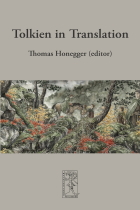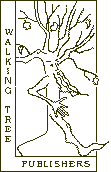Tolkien in Translation
Thomas Honegger (editor)
Cormarë Series No. 4

<--previous | all publications | next-->
how to buy this item
 As a linguist and philologist, J.R.R. Tolkien used words and languages as a source of inspiration for his subcreation and continuously interwove them with his narratives. With language being so central to his works, the task of translating them into other languages raises numerous problems for the translator. This volume reflects on some of these challenges and how different translators overcame them.
As a linguist and philologist, J.R.R. Tolkien used words and languages as a source of inspiration for his subcreation and continuously interwove them with his narratives. With language being so central to his works, the task of translating them into other languages raises numerous problems for the translator. This volume reflects on some of these challenges and how different translators overcame them.
The volume opens with a study that takes a theoretical angle on the problem of translation and considers the applicability of Tolkien's views on the matter in the light of broader translation theory. The subsequent contributions look at the translations of Tolkien's works into various languages (Norwegian, Spanish, French, Russian and Esperanto). The study of the Russian translation focuses on the underground circulation of unapproved versions (samizdat) during the time that they were banned in the Soviet Union, and compares the different approaches of the various translators.
The theme of this book is continued in a second volume, Translating Tolkien: Text and Film, available as number 6 in the Cormarë Series from Walking Tree Publishers.
A Question of Style: On Translating The Silmarillion into Norwegian
The main challenge in translating Tolkien's The Silmarillion lies in the author's use of archaisms as a deliberate and fully integrated style element. The article discusses the particular problems of transferring this archaic mode into contemporary Norwegian and describes how the translator attempted to solve these problems by 'constructing' an ancient-sounding language style especially for this book. Some other problems encountered in the translation process are also briefly discussed, including a few ambiguities and possible errors in the original.
Begging your pardon, Con el perdón de usted
Some Socio-Linguistic Features in The Lord of the Rings in English and Spanish
In The Lord of the Rings, the repeated occurrence of certain expressions in the characters' speech marks them as deeply as any other feature; thus, their speech idiosyncrasies become a fundamental part of their personality. Since its publication in 1954-55, Tolkien's epic has been translated into many languages, Spanish among them. Were these linguistic features retained in the translation? The purpose of this paper is to examine how the linguistic varieties are expressed in Spanish, to see if they help the readers who have not read the novel in the original language to perceive certain personal characteristics as depicted through speech.
On the Translation of J.R.R. Tolkien's Works into French and their Reception in France
This article first discusses the link between the history behind the French translations of J.R.R. Tolkien's works and the reception of his works in France, as well as Tokien's reputation among both the general French readership and the French media. In the second part, The Lord of the Rings comes into focus, as we examine the problems raised by the translation of Tolkien's unique style, his creations and his universe into French.
Nine Russian Translations of The Lord of the Rings.
Tolkien was banned in the Soviet Union, but that did not stop Russian translations of his works from circulating the illicit underground Russian press known as samizdat. The result of Tolkien's years of exile in samizdat, and the collapse of the state-controlled publishing industry when the Soviet Union disintegrated is that there is not just one published Russian translation of The Lord of the Rings as is common in other countries. There are nine contemporary published translations competing with each other for the reader's attention. Each translator has a slightly different approach to the text. Each translation has a slightly different interpretation of Tolkien. Each translator has a different story to tell. The goal of this paper is to point out the differences.
The Treatment of Names in Esperanto Translations of Tolkien's Works.
The Esperanto versions of The Lord of the Rings and The Hobbit are fairly typical translations of Tolkien's works. In the treatment of Tolkien's complex nomenclature, their translators have made use of the usual strategies, translating some names, modifying others, and leaving some in their original forms. This paper focuses on the methodology used by William Auld in La Mastro de l' Ringoj, pointing out the numerous inconsistencies in that translation. The nomenclature used by Christopher Gledhill and Don Harlow in their Hobbit translations is also compared and contrasted with Auld's renderings.
A Theoretical Model for Tolkien Translation Criticism.
This article outlines a possible theoretical model to serve as a basis for criticism of translations of Tolkien's Middle-earth cycle, adapted from the 'hermeneutic motion' of George Steiner and considering both text-internal and socio-economic constraints on the translator. It argues that Tolkien's published comments on translation cannot be accepted uncritically as authoritative, but need to be justified in the light of the overall literary and linguistic structure of the books, particularly the text-world and the pseudotranslation device.

Book reviews in Mythlore (1st November 2012)
Second edition of translation volumes (20th November 2011)
Upcoming publications (30th June 2011)
About the first edition

152 pages, Walking Tree Publishers 2003, Second edition 2011, Cormarë Series No. 4, Editor: Thomas Honegger
, ISBN: 978-3-905703-15-3.

<--previous | all publications | next-->
how to buy this item

More on Tolkien in Translation

terms and conditions
visitors since 01.10.02
last updated 20.11.11
